The Beauty Of Biophilic Architecture

Photo Credits: Dec Michal
Biophilic Design is the integration of humans into the natural world, to be at one with the trees and the stones. Biophilic design brings people back to their roots. Humankind as a species grew and evolved in nature, so in a world full of skyscrapers and big polluted cities humans have the need to reconnect with an integral part of their life, nature.
Biophilic Design is a concept within the architecture and building industry that aims to enhance the connection between building occupants and the natural environment. This is achieved by incorporating elements of direct nature, indirect nature, and space and place conditions. The concept is applied at both the building and city scale, with proponents arguing that it offers a range of health, environmental, and economic benefits for both occupants and urban spaces, with few drawbacks. Although the term "biophilic design" was coined relatively recently, the principles behind it have been present in architecture for centuries. For instance, traces of biophilic design can be found in the Hanging Gardens of Babylon, one of the ancient wonders of the world. The features that characterize biophilic design were already evident in earlier sustainable design principles, but the introduction of the term provided broader recognition and academic credibility.
Biophilic Design is a concept within the architecture and building industry that aims to enhance the connection between building occupants and the natural environment. This is achieved by incorporating elements of direct nature, indirect nature, and space and place conditions. The concept is applied at both the building and city scale, with proponents arguing that it offers a range of health, environmental, and economic benefits for both occupants and urban spaces, with few drawbacks. Although the term "biophilic design" was coined relatively recently, the principles behind it have been present in architecture for centuries. For instance, traces of biophilic design can be found in the Hanging Gardens of Babylon, one of the ancient wonders of the world. The features that characterize biophilic design were already evident in earlier sustainable design principles, but the introduction of the term provided broader recognition and academic credibility.
Biophilic Architecture is a design approach that incorporates natural elements, patterns, and principles into constructed environments to improve human well-being, productivity, and health. Rooted in the concept of biophilia - the inherent human connection to nature - this approach aims to reconnect urban spaces with the natural world.
Key Principles of Biophilic Architecture
Biophilic architecture helps foster a deeper connection between humans and nature, this benefits their well-being, as well as environmental sustainability. Some of its key principles include:
- Integration with Nature: Incorporate natural elements like plants, water, and sunlight directly into building design.
- Natural Light and Ventilation: Maximize daylight and fresh air through large windows, skylights, and ventilation systems.
- Material Connection: Use natural, renewable materials such as wood, stone, and bamboo.
- Biomimicry: Design inspired by nature’s patterns, forms, and ecosystems.
- Prospect and Refuge: Balance open, expansive views with enclosed, safe spaces.
- Multi-Sensory Engagement: Include sounds, textures, and scents that mimic nature.
- Sustainability: Use energy-efficient systems, green roofs, and rainwater harvesting.
Key Strategies
To incorporate biophilic architecture in our spaces, we can use some of its key strategies such as:
- Green Infrastructure: Living walls, green roofs, and vertical gardens.
- Outdoor-Indoor Connection: Seamless transitions between indoor and outdoor spaces.
- Water Features: Fountains, ponds, or waterfalls for calming effects.
- Urban Integration: Blend buildings with natural surroundings or urban forests.
- Dynamic Spaces: Diverse layouts inspired by natural ecosystems.
Biophilic architecture examples
These are some prominent examples of Biophilic Architecture, in modern society.
Barbican Centre / London, UK / Chamberlin, Powell and Bon
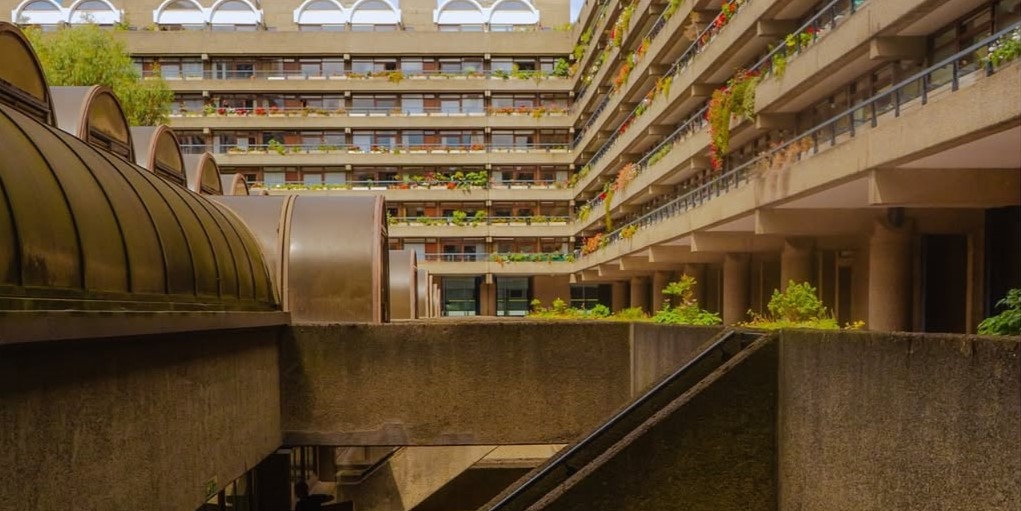
Photo credits : Josh Dobbs
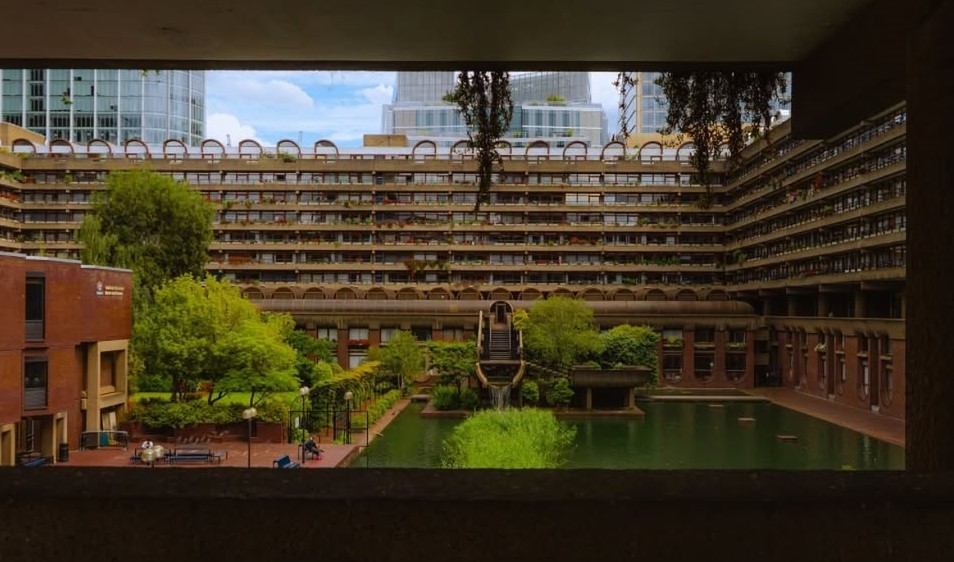
Photo credits : Josh Dobbs
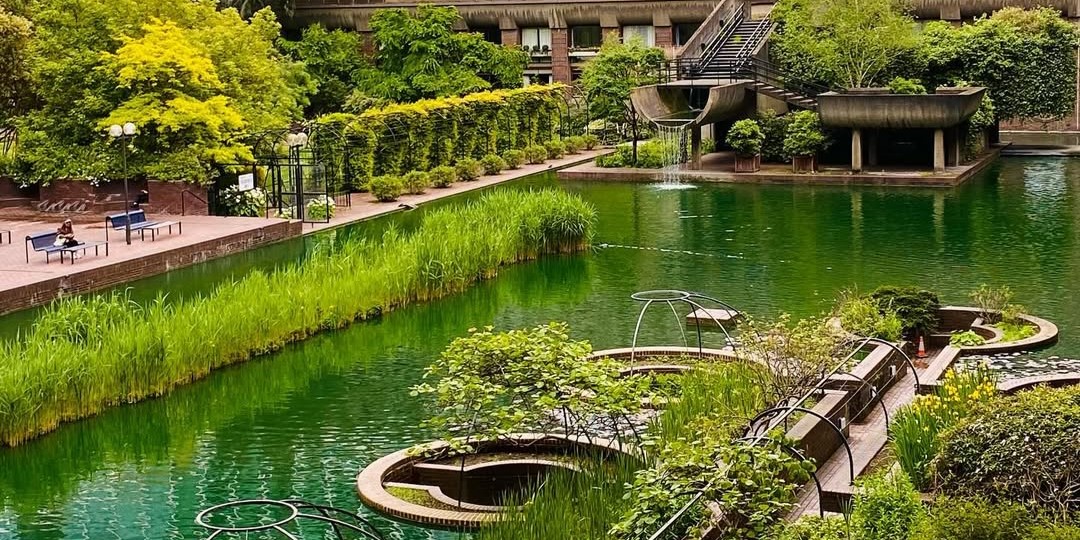
Photo credits : Joseph Kim
One River North / Denver, Colorado / MAD Architects
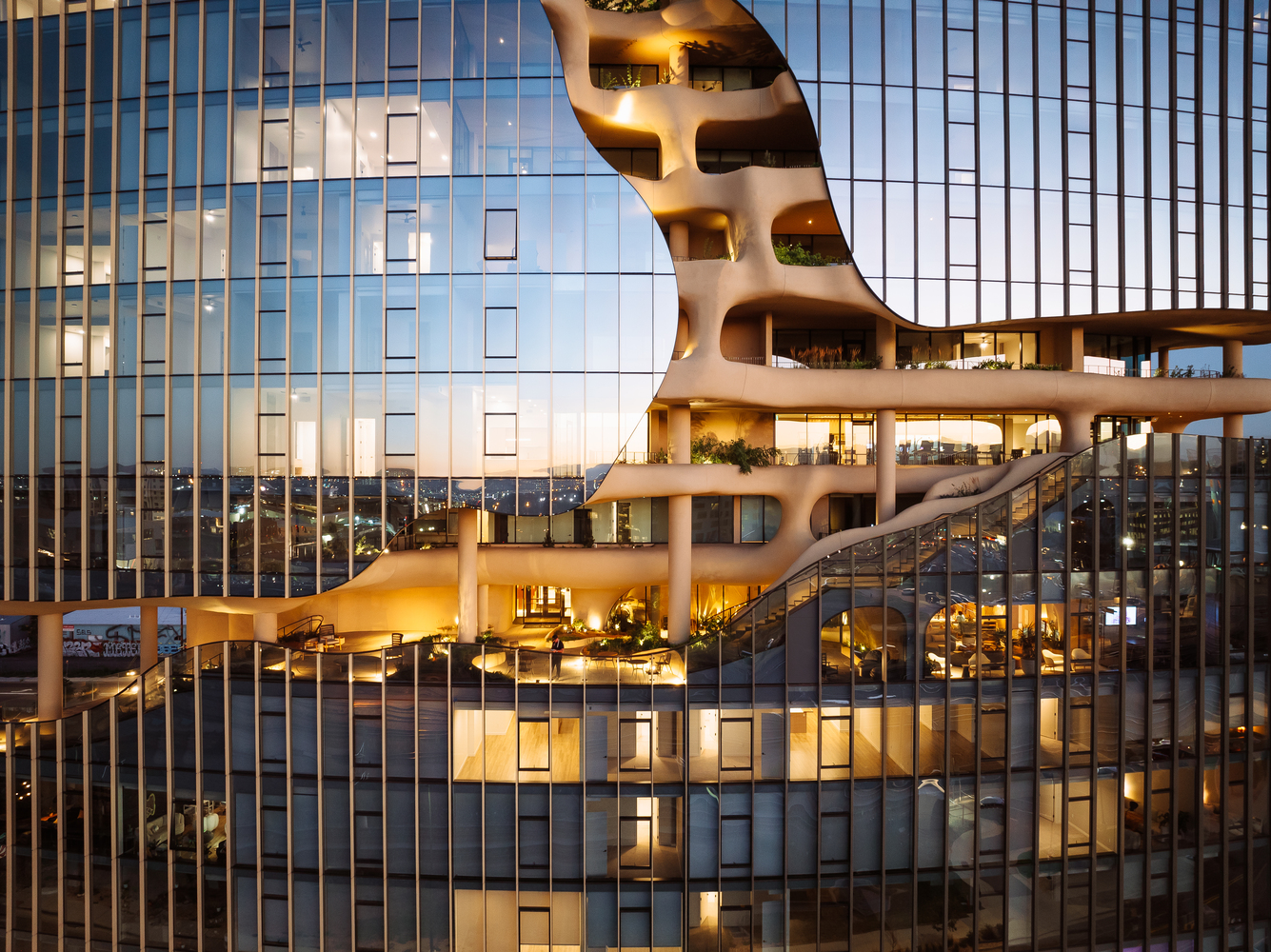
Photo credits: Courtesy of MAD Architects
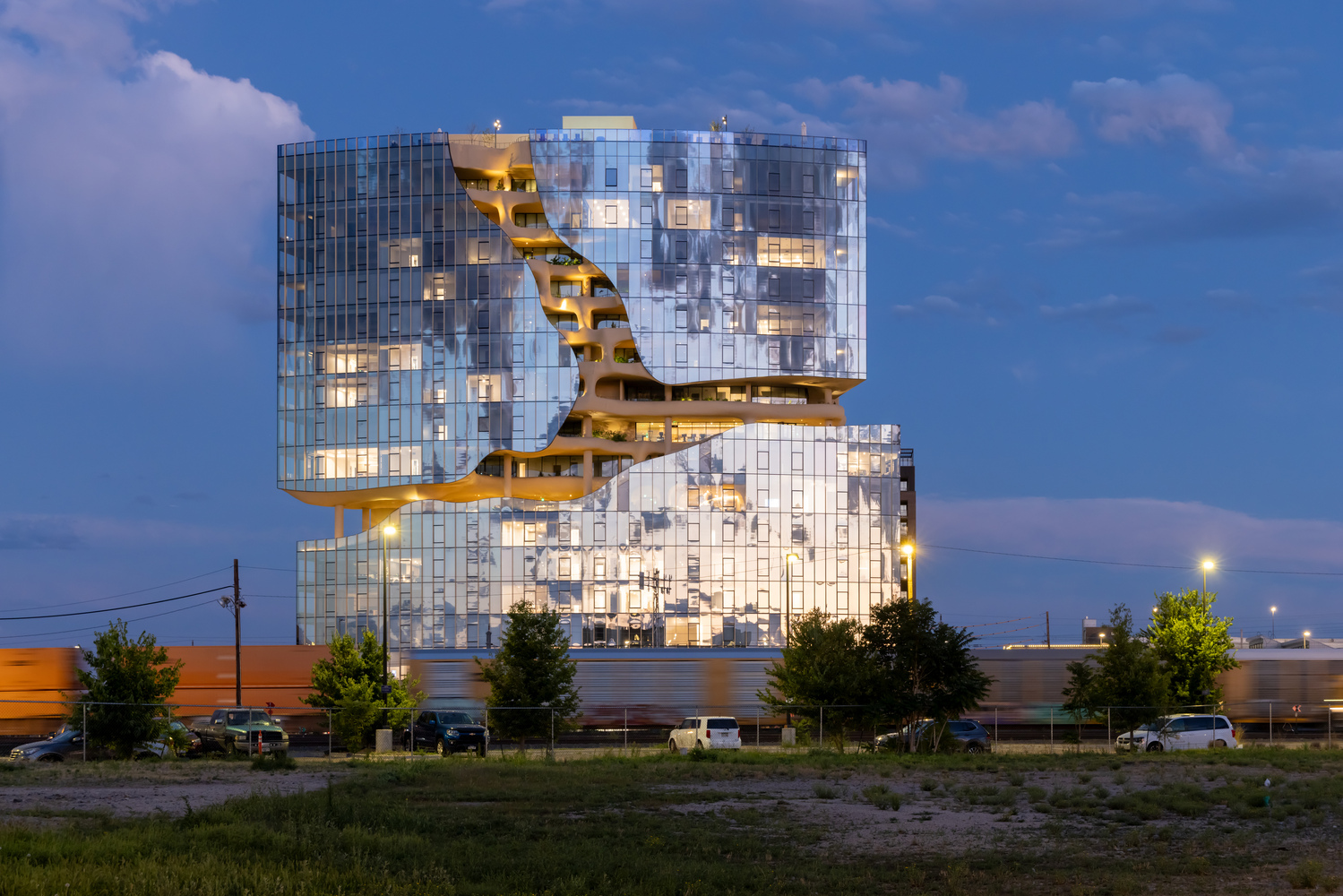
Photo credits: Courtesy of MAD Architects
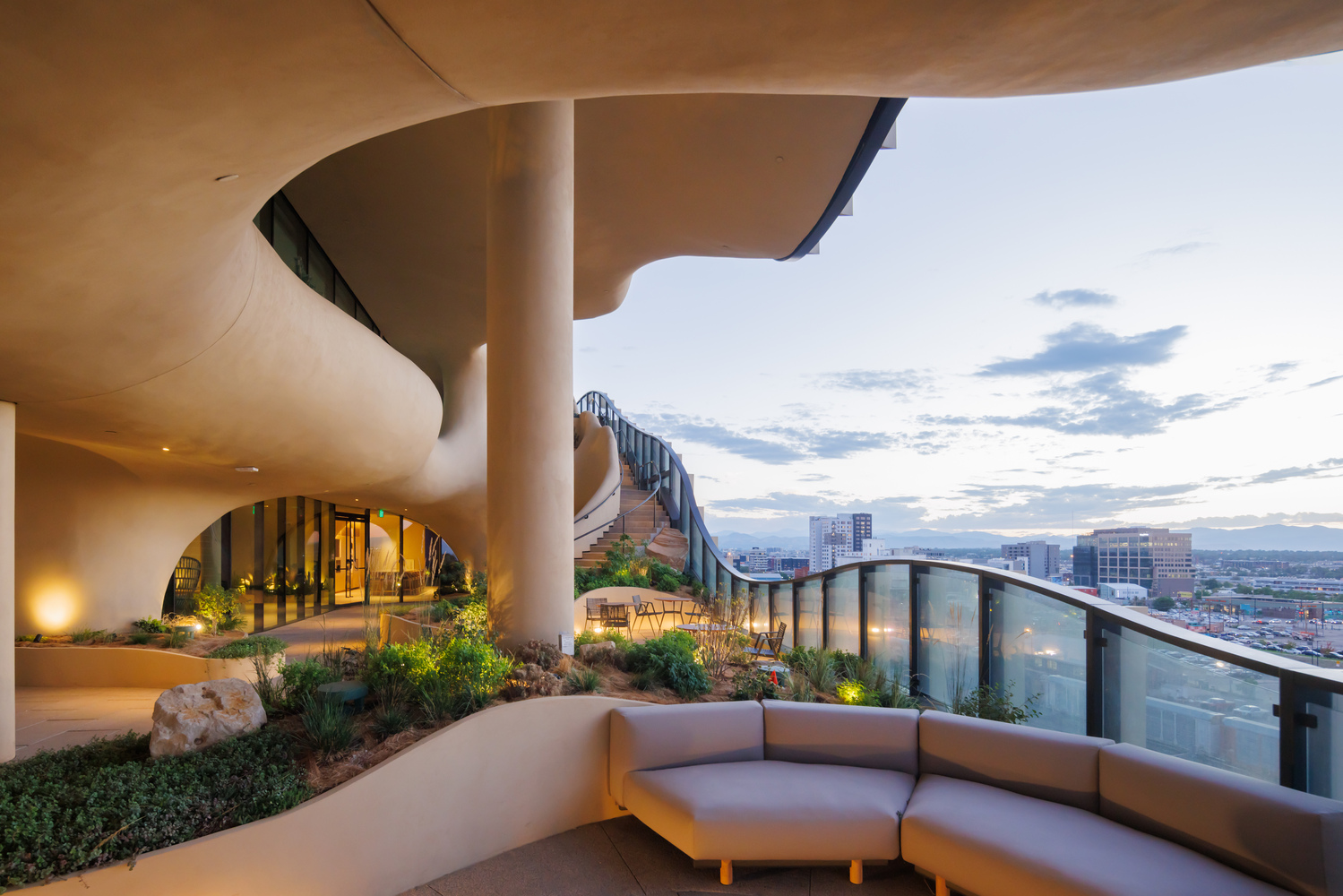
Photo credits: Courtesy of MAD Architects
Bosco Verticale / Milan, Italy / Boeri Studio
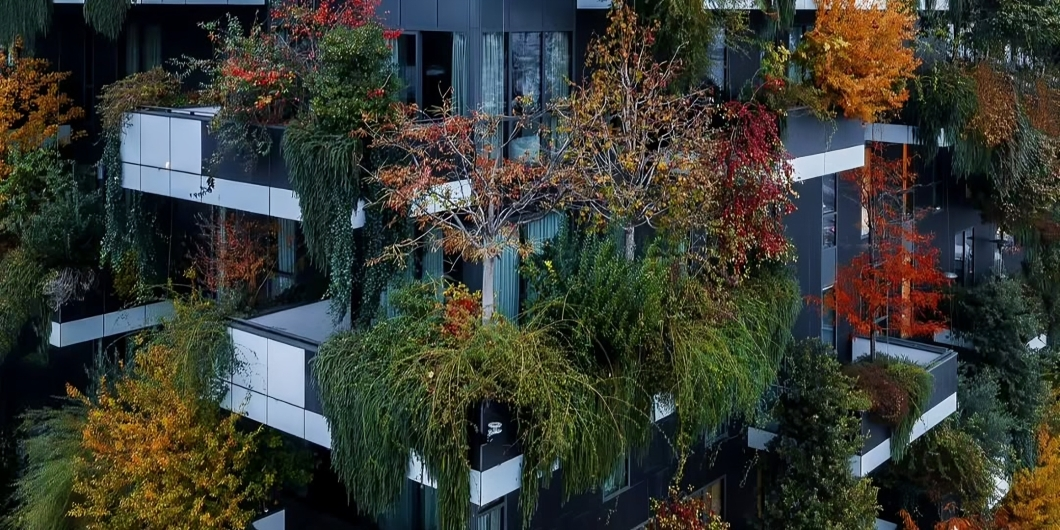
Photo credits : Sebastien Nagy
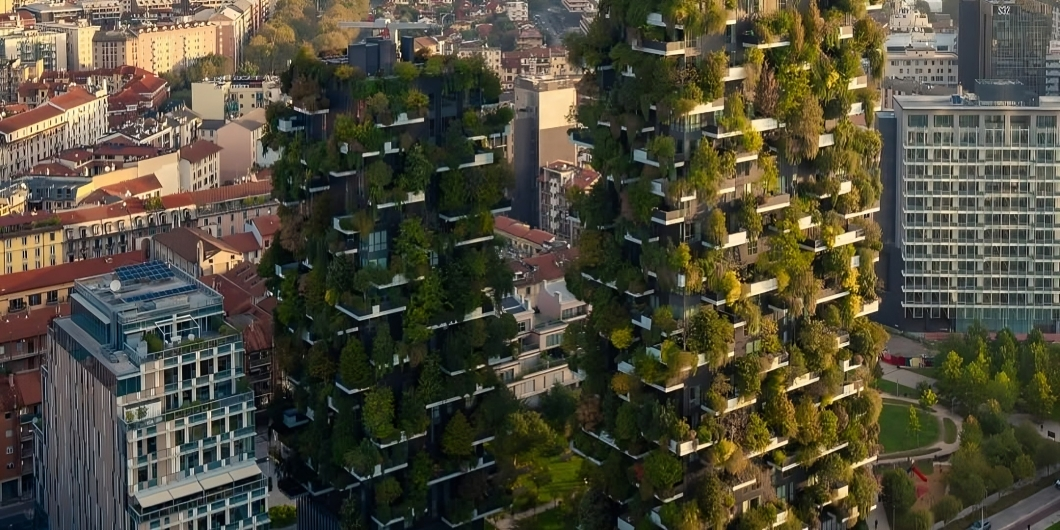
Photo credits : Dimitar Harizanov
At MUA, we believe architecture profoundly influences human well-being. Incorporating nature into a person’s home and subsequently in one’s life has a meaningful impact, on both the physical and mental health of a person. Studies show that greenery in offices and study areas boosts productivity, while open spaces with ample natural light improve sleep quality and reduce stress. We believe that biophilic architecture is of great importance in today’s world, and should be implemented and embraced more often.